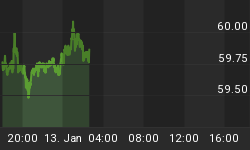The Fed believes that holding interest rates low fosters business growth, hiring, and bank lending?
So why isn't that happening? I have discussed many reasons, but today I have another one from Steve H. Hanke, Professor of Applied Economics at The Johns Hopkins University who discusses The Federal Reserve vs. Small Business.
Hanke notes that one of the consequences of low interest rates is that "banks with excess reserves are reluctant to part with them for virtually no yield in the interbank market."
And why should they? Why take risk for nothing?
Interbank Lending

Banks Unwilling to Retain Loans
Hanke Writes ....
Without the security provided by a reliable interbank lending market, banks have been unwilling to scale up or even retain their forward loan commitments. This was verified in a recent article in Central Banking Journal by Stanford Economist Prof. Ronald McKinnon - appropriately titled "Fed 'stimulus' chokes indirect finance to SMEs." The result, as Prof. McKinnon puts it, has been "constipation in domestic financial intermediation" - in other words, a credit crunch.
When banks put the brakes on lending, it is small and medium enterprises that are the hardest hit. Whereas large corporate firms can raise funds directly from the market, SMEs are often primarily reliant on bank lending for working capital. The current drought in the interbank market, and associated credit crunch, has thus left many SMEs without a consistent source of funding.
As it turns out, these "small" businesses make up a big chunk of the U.S. economy - 49.2% of private sector employment and 46% of private-sector GDP. Indeed, the untold story is that the zero-interest-rate trap has left SMEs in a financial straightjacket.
In short, the Fed's zero interest-rate policy has exacerbated a credit crunch that has been holding back the economy.
Impossible to Prove
I believe Hanke's theory is accurate. It is also impossible to prove.
Nor can I prove my thesis that by holding interest rates low, the Fed encourages not hiring, but rather corporate investment in software and hardware solutions that enable companies to get rid of workers.
Yet, why hire someone at increasing minimum wages, and increasing costs of medical care, when you can borrow money for next to nothing and invest in solutions that require fewer workers?
People have replied that increasing productivity is the natural state of affairs. And Indeed it is. And the Fed can exacerbate that trend, just as Hanke claims "Fed's policies are actually exacerbating the credit crunch" to SMEs (small and medium sized enterprises).
What About Obamacare?
Obamacare is a huge part of the jobless recovery problem as well. I have talked about this on numerous occasions. Here is a partial list:
- October 9, 2012: Is Obamacare Responsible for the Surge in Part-Time Jobs?
- October 20, 2012: Mish Obamacare Mailbag: Expect More Part-Time Jobs
- February 2, 2012: Obamacare in Action: Retail Workweek Hits 3-Year Low
- February 19, 2013: Opting Out of Obamacare (the Unaffordable Health Care Act); Not Even Labor Unions Want It
- May 3, 2013: Obamacare Affects Part-Time Employment Yet Again; Nullification Bill Passes South Carolina House; Analysis of Healthcare Penalty Rates
The evidence is now so overwhelming that no one but Obama and the Democrats can deny that Obamacare is responsible for the massive surge in jobs (nearly all of them part-time).
Jed Graham at Investor's Business Daily writes ObamaCare's $96 an hour cost spike may end 30-hour workweek
Here is the crucial chart by Jed Graham.

Note the incremental cost of hiring someone who works more than 30 hours a week.
It's nice to see someone quantify exactly what I said would happen nearly 8 months ago. And it did, and the chart explains why. Companies across the board reduced hours of workers from 32 to 25 and had to make up for the difference by hiring hundreds of thousands more part-time workers.
This explains the massive surge in jobs, and why full-time hiring is stagnant at best.
One cannot blame the Fed for this. But one can blame Obama. One can also blame the Fed for holding rates so low that companies can borrow money for next to nothing and invest in hardware and software to eliminate employees.
The Fed and the administration wonder why their policies do not work. I just explained why, so did Hanke, and so did Graham. Nonetheless, the Fed and Obama are both committed to the same policies that cannot and will never work.
















